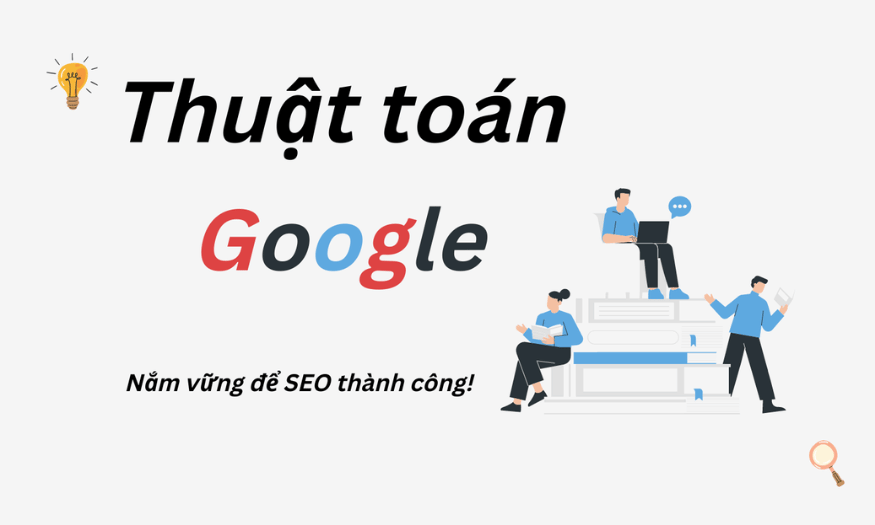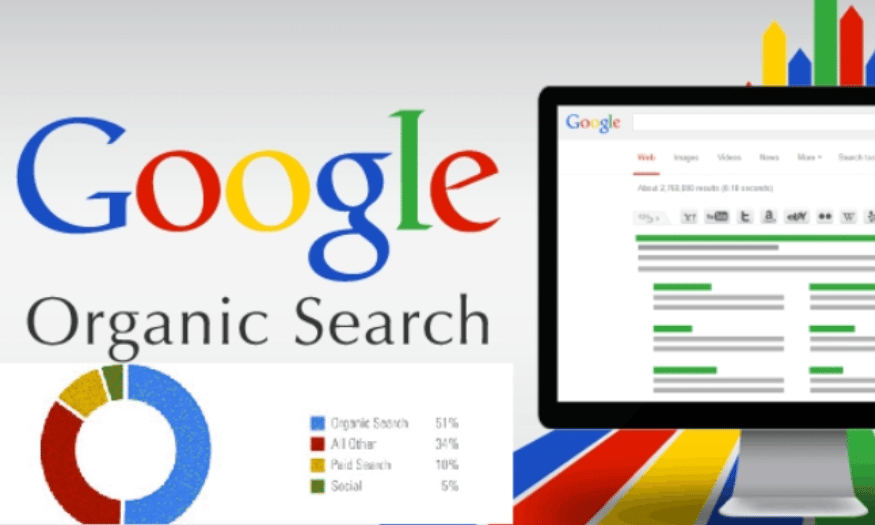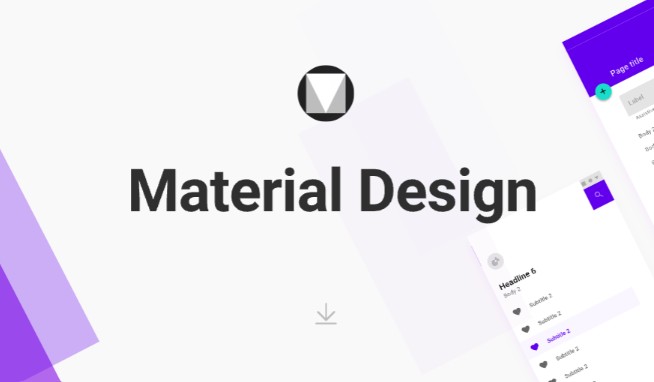Best Selling Products
7+ Important Google Algorithms SEOers Must Know
Nội dung
Search engine optimization (SEO) has become an indispensable part of online marketing strategies. In particular, Google - the giant in the search field - constantly updates and improves its algorithms to bring users the most accurate and quality search results. For SEOers, mastering these algorithms not only helps improve website rankings but also optimizes user experience. In this article, let's explore with Sadesign 10+ important Google algorithms that every SEOer needs to know.

Search engine optimization (SEO) has become an indispensable part of online marketing strategies. In particular, Google - the giant in the search field - constantly updates and improves its algorithms to bring users the most accurate and quality search results. For SEOers, mastering these algorithms not only helps improve website rankings but also optimizes user experience. In this article, let's explore with Sadesign the important Google algorithms that every SEOer needs to know.
1. Google Panda Algorithm
Google Panda, first launched on February 23, 2011, marked a major shift in how Google evaluates the quality of content on websites. The main goal of this algorithm is to improve the quality of search results by prioritizing valuable content and penalizing pages with thin or low-quality content.
Purpose and impact
Panda is more than just a set of rules; it is a philosophy for providing trustworthy and useful information to users. The algorithm aims to eliminate spam sites, improving the user experience by ensuring that searchers receive high-quality results.
Release date : February 23, 2011
Last updated : July 17, 2015 (integrated into core algorithm)
Goal : Reduce the rankings of websites with low-quality and duplicate content
Key Features
Panda evaluates content based on many factors, including:
Content Quality : Evaluate the depth, accuracy, and informational value of the content.
User Generated Content : Consider comments and ratings from users, this can affect rankings.
User Experience : Page load speed and interface design are also considered.
Optimization strategy
To optimize websites for the Panda algorithm, SEOers need to:
Create quality content : Content must be unique, valuable and useful to users.
Avoid duplicate content : Do not copy from other sources and ensure originality.
Improve user experience : Optimize page loading speed and design user-friendly interface.
.png)
2. Google Penguin Algorithm
Launched on April 24, 2012, Google Penguin was a major step forward in Google's fight against spam. Penguin's primary goal was to target and penalize sites that used unnatural link building methods.
Purpose and impact
Penguin aims to improve the quality of search results by eliminating sites that use black hat SEO tactics. The algorithm detects sites that attempt to manipulate Page Rank through unnatural links.
Release date : April 24, 2012
Last updated : September 23, 2016 (integrated into core algorithm)
Goal : Demote pages that use black hat SEO techniques like link spam
Key Features
Penguin has outstanding features such as:
Detect unnatural linking patterns : Identify link buying and selling and PBN link networks.
Link Quality Assessment : Review links to the site and their relevance.
Anchor Text Analysis : Investigate over-optimization of keywords in anchor text.
Optimization strategy
To optimize for Penguin, SEOs should:
Natural Link Building : Create quality content and encourage others to link to your site.
Avoid buying and selling links : Do not participate in unnatural link networks.
Diversify your link profile : Get links from a variety of sources.
(2).png)
3. Google Hummingbird Algorithm
Introduced on September 26, 2013, Hummingbird marked a major step forward in Google's natural language understanding capabilities. The algorithm improves the way Google processes and understands search queries.
Purpose and impact
Hummingbird's goal is to improve search accuracy by better understanding the context and intent behind user queries. This is especially important for complex or long-tail queries.
Release date : September 26, 2013
Major Updates : None, but elements continue to evolve
Goal : Better understand search intent and improve results accuracy
Key Features
Hummingbird has outstanding features such as:
Semantic Search : Understand the meaning behind words instead of just searching for specific keywords.
Focus on long-tail keywords : Reflect how users actually search for information.
Handling complex questions : Improve understanding and handling of conversational queries.
Optimization strategy
To optimize for Hummingbird, SEOs should:
Use natural language : Reflects how users actually speak and search.
Optimize for conversational queries : Focus on questions and natural search.
Provide comprehensive content : Answer user questions in depth and detail.
4. Google Pigeon Algorithm
Google Pigeon, launched on July 24, 2014, marked a major step forward in improving local search results. This algorithm changed the way Google handles and displays search results related to geographic locations, making it easier for users to find the information they need in their area.
Purpose and impact
Pigeon's main goal is to improve the quality of local search results and tie them more closely to traditional web search algorithms. This means that local search results rely not only on geographic information but also on ranking signals from regular websites.
Release date : July 24, 2014 (US), December 22, 2014 (UK, Canada, Australia).
Goal : Improve local search results and better connect local search and main search algorithms.
Key Features
Pigeon has many outstanding features to help improve local search results:
Strengthening the connection between local search and web ranking signals : Help users find more accurate information.
The growing importance of Google My Business listings : These listings are becoming an important factor in local search results.
More emphasis on local directory citations : Consistency of business information across different platforms is closely scrutinized.
Optimization strategy
To optimize for the Pigeon algorithm, SEOers should apply the following strategies:
Optimize your Google My Business listing : Provide complete and accurate information to increase visibility in local searches.
Ensure NAP information consistency : Name, Address and Phone Number need to be consistent across all online platforms.
Build and manage business listings on reputable local directories : This will help increase your business's credibility and visibility.
(2).png)
5. Google Mobile-Friendly Update (Mobilegeddon)
The Mobile-Friendly Update, also known as “Mobilegeddon”, was rolled out by Google on April 21, 2015. It was a major turning point in prioritizing the mobile user experience in search results.
Purpose and impact
The goal of this update is to improve the ranking of mobile-friendly websites in mobile search results. This is to improve user experience and reflect the growing trend of mobile internet usage.
Release date : April 21, 2015.
Goal : Increase the ranking of mobile-friendly websites on mobile search results.
Key Features
Mobile-Friendly Update has outstanding features such as:
Mobile-friendliness assessment criteria : Include text readability, spacing between links, and avoiding incompatible content.
Impact on mobile user experience : Page load speed and navigation are highly valued.
Prioritize responsive design : The website needs to automatically adjust to the screen size of the device.
Optimization strategy
To optimize for the Mobile-Friendly update, SEOers should:
Use responsive design : Make sure your website looks good on all screen sizes.
Optimize page load speed : Compress images and use caching to improve speed.
Improve navigation : Make sure buttons and links are easy to tap on mobile devices.
6. Google RankBrain Algorithm
RankBrain, introduced on October 26, 2015, is a machine learning algorithm by Google, marking a major step forward in applying artificial intelligence to the search ranking process.
Purpose and impact
RankBrain's main goal is to use machine learning to better understand search queries and deliver the most relevant results. This algorithm helps Google handle complex or previously unseen queries efficiently.
Release Date : Introduced on October 26, 2015.
Goal : Use artificial intelligence to better understand search queries.
Key Features
RankBrain has outstanding features such as:
Ability to interpret search intent : Based on context and relationships between words.
Impact on SEO : Prioritize content that matches user search intent.
Efficiently handle long and complex queries : Especially queries that Google has never seen before.
Optimization strategy
To optimize for RankBrain, SEOs should:
Create user-focused content : Meet their needs and solve their problems.
Optimize for search intent : Instead of just focusing on specific keywords.
Improve engagement metrics : Like click-through rate (CTR) and time on page.
(2).png)
7. Google Medic Update
The Medic Update, which rolled out on August 1, 2018, had a profound impact on health and finance-related websites. Although not officially named by Google, the SEO community has dubbed it “Medic” due to its dramatic impact on YMYL (Your Money or Your Life) sites.
Purpose and impact
The main goal of the Medic update is to improve the quality of health-related content and focus on EAT (Expertise, Authoritativeness, Trustworthiness) factors. This is to ensure that important health and financial information comes from trustworthy and expert sources.
Release date : August 1, 2018.
Goal : Improve the quality of health-related websites and regulate websites with YMYL content.
Key Features
Medic has many important features:
YMYL Pages Hit Hard : Health, finance, and related pages are all hit hard.
Higher value for expertise and authority : Pages that clearly demonstrate expertise and authority in their field will receive more favor.
Author information verification : Focus on providing information about the author's expertise, especially for medical content.
Optimization strategy
To optimize for the Medic update, SEOs should:
Enhance the EAT factor : Highlight the expertise and reputation of the author and organization.
Ensure content accuracy : Update information regularly, especially in sensitive areas.
Provide detailed information about the author : Including degrees, certifications and experience.
8. Google BERT Algorithm
The BERT (Bidirectional Encoder Representations from Transformers) algorithm was introduced by Google on October 25, 2019. This is an important step forward in applying natural language processing to search engines, helping Google better understand the context of words in search queries.
Purpose and impact
The goal of BERT is to improve search engines' ability to understand natural language, especially for complex or connected-word queries. This helps provide more accurate and relevant results to users.
Release date : October 25, 2019.
Goal : Improve natural language understanding to provide better search results.
Key Features
BERT brings several important improvements:
Advanced natural language processing : Understand the context and meaning of each word in a sentence.
Efficiently handle complex queries : Improve understanding of long or word-heavy queries.
Focus on user search intent : Get a better understanding of what users are really looking for.
Optimization strategy
To optimize for BERT, SEOs should:
Write comprehensive content : Address user queries in detail and completely.
Optimize for search intent : Instead of just focusing on specific keywords.
Use natural language : Reflect how users actually search and ask questions.
(2).png)
9. Google Core Updates
Google Core Updates are major, comprehensive updates to Google's search algorithm, typically rolled out multiple times a year. These updates can cause significant changes to search results and website rankings.
Purpose and impact
The primary goal of Core Updates is to improve the overall quality of search results by adjusting how Google evaluates content and web pages. These updates are intended to ensure that users always receive the most accurate, trustworthy, and valuable information.
Release Time : Continuous major updates (e.g. March, June, September 2019).
Goal : Adjust and improve the core algorithm to improve the quality of search results.
Key Features
Core Updates typically include:
Adjusting how content is evaluated : Improve how Google analyzes and ranks web pages.
Major ranking impact : Can cause significant fluctuations in search rankings.
Optimization strategy
To optimize for Core Updates, SEOs should:
Update and improve content : Ensure content is always relevant and of high quality.
Track the changes : Analyze and adjust your SEO strategy based on Google updates.
Focus on user experience : Improve factors like page load speed and interface design.
10. Conclusion
Thus, understanding and applying Google algorithms is a key factor to help SEOers improve the effectiveness of their optimization campaigns. From focusing on content quality to building natural links, these algorithms not only shape the way Google evaluates websites but also create opportunities for businesses to develop sustainably in the online environment. Regularly update and adjust your SEO strategy to best respond to changes from Google, thereby achieving optimal results in work.












































